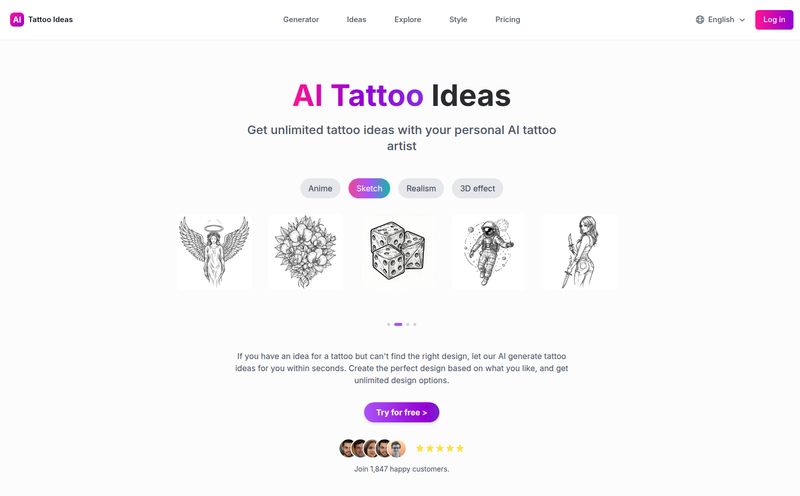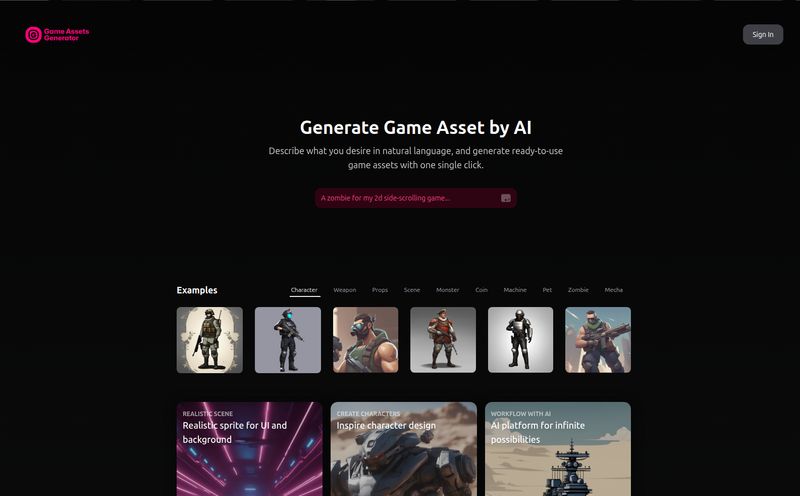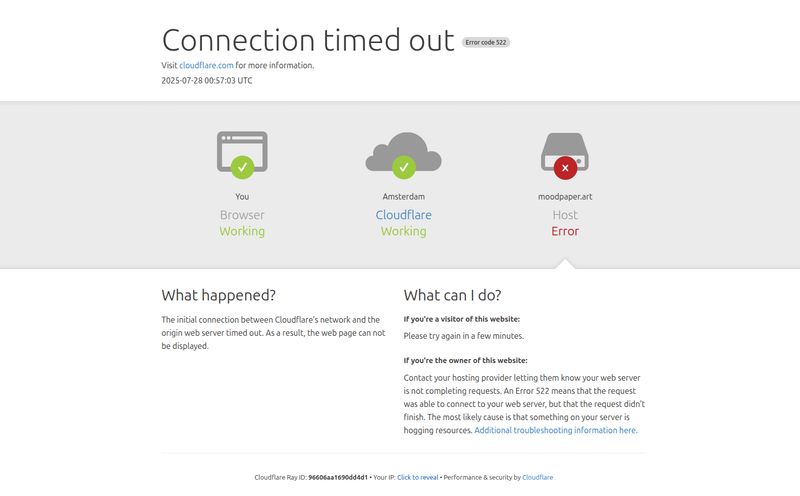You’ve just spent weeks, maybe months, pouring your soul into a new track. You’ve tweaked the mix until your ears are ringing, perfected the master, and you're finally ready to unleash it on the world. But then you hit the wall. The dreaded cover art.
We’ve all been there. Scouring Fiverr for something that doesn’t look like it was made in Microsoft Paint circa 1998, or trying to convince our one “artsy friend” to help out for the fifth time. Or worse, dropping hundreds of dollars on a professional designer, which, for an indie artist, can be the difference between breaking even and eating ramen for a month. The struggle is real.
So when I stumbled upon a platform called Trackart, which claims to use AI to generate unique cover art based on your actual music, my curiosity was definitely piqued. An AI that listens to my track’s BPM and energy to create its own visual universe? It sounds like something out of a sci-fi movie. But does it actually work? I had to find out.
So, What on Earth is Trackart?
At its core, Trackart is an AI-powered cover art generator. But that’s a bit of an oversimplification. It’s not just randomly spitting out abstract shapes. The whole idea is that you feed it your music file, and its algorithm analyzes the nuts and bolts of your track—the tempo, the energy, the overall vibe—to create custom visuals. It’s like giving your track a paintbrush and letting it paint its own portrait.
The platform is very clearly aimed at the electronic music scene. Think house, techno, ambient, DnB... the kinds of genres where abstract, energetic, or atmospheric visuals feel right at home. If you're making a folk-rock album, this... uh... might not be the tool for you. But for producers slaving away in Ableton or FL Studio, it promises a fast, tailored solution to a persistent problem.

Visit Trackart
How It Works: A Four-Step Dance with AI
The team behind Trackart clearly understood that musicians want to make music, not mess around with complicated software. The process is refreshingly straightforward.
First, you upload your track. Just drag and drop your .mp3 or .wav file. The AI then gets to work, doing its beat analysis and genre detection thing. It’s all happening behind the scenes, thankfully.
Next comes the magic: the AI cover generation. Based on its analysis, the tool churns out a bunch of visual concepts. You can pick from different styles, which is a nice touch. It's not just a one-and-done deal.
One of the coolest features, in my opinion, is the platform preview. It shows you how your chosen art will look on Spotify, Apple Music, and Deezer. Anyone who's ever uploaded a cover only to find the title gets awkwardly cut off by the play button knows how much of a lifesaver this is. It's a small detail, but one that shows they get the modern musician’s workflow.
Finally, you get to the final touches. You can add your artist name and track title, adjust some style elements, and fine-tune it until it feels right. Simple, effective, and to the point.
Let's Talk Money: The Trackart Pricing Plans
Alright, the part everyone's waiting for. How much does this magic box cost? The pricing structure is pretty clear, and there's a tier for almost everyone.
| Plan | Price | Key Features |
|---|---|---|
| Free | €0 | 2 generations (total), SD quality, watermark. |
| Pro | €24.99 / month | 75 generations/month, HD quality, add text, multiple fonts, 24h support. |
| Elite | €79.99 / month | 300 generations/month, exclusive styles, advanced font selection. |
The Free plan is essentially a test drive. You get to see how it works, but with the watermark and SD quality, you're not going to be using the output for an official release. It's perfect for just satisfying your curiosity.
Honestly, the Pro plan seems to be the sweet spot for most serious producers or small labels. For about the price of a few fancy coffees, you get 75 high-definition artworks a month. That’s more than enough for a steady stream of singles, EPs, and even social media content. The HD quality and text tools are the real deal-makers here.
The Elite plan is for the power users—labels releasing multiple tracks a week or artists who want to generate tons of visual variations for promotion. The exclusive styles are a tempting perk, but for the solo artist, it's probably overkill.
The Good, The Bad, and The AI-Generated
Where Trackart Really Shines
The most obvious advantage is the sheer speed. I've personally wasted entire weekends trying to design a half-decent cover in Photoshop, only to end up with something that looks... well, homemade. With Trackart, you can have a dozen solid, professional-looking options in minutes. This frees you up to, you know, actually make more music.
The ease of use is another huge win. Its a clean interface with no bloat. You don't need a graphic design degree to get a good result. And the fact that the art is optimized for streaming platforms from the get-go removes a layer of technical headache that many artists dont want to deal with.
A Few Important Caveats
Now, it’s not a perfect silver bullet. The biggest limitation is its genre focus. As I mentioned, it’s built for electronic music. The styles—psychedelic, chromatic, abstract—are gorgeous for a techno track but would look bizarre on a singer-songwriter's EP. So know what you're getting into.
Also, while the AI does a fantastic job of creating a starting point, you’ll probably still want to do some fine-tuning. It might generate a perfect image that just needs a different font or a slight color tweak. Think of it less as a fully automated designer and more as an incredibly talented and fast assistant. It gets you 90% of the way there in 1% of the time.
Who Is This AI Art Machine Really For?
After playing around with it, I have a pretty clear picture of the ideal Trackart user. It’s the solo electronic music producer who releases music consistently. It’s the bedroom artist who wants their SoundCloud or Spotify profile to look slick and cohesive without breaking the bank. It's for the small, independent dance label that needs to push out three releases a week with quality, on-brand artwork for each.
If you're in a band with a very specific, non-electronic aesthetic, or if you need hyper-detailed illustrative work, you’re still probably better off hiring a human artist. But for a massive slice of the modern music-making community, Trackart solves a genuine, nagging problem in a pretty elegant way.
FAQs About Trackart
- Can I use Trackart for music genres other than electronic?
- You can, but the visual styles are heavily optimized for electronic music. The results for something like folk, classical, or metal might not fit the genre's typical aesthetic. It's best to use the free trial to see if it creates something you like for your specific sound.
- Do I own the copyright for the art I generate?
- This is the million-dollar question with all AI art. Generally, with paid plans on services like this, you are granted a commercial license to use the generated images for your releases. However, I'd always recommend checking their most current Terms of Service for the specific legal details on ownership and usage rights.
- Is the 'HD Quality' from the Pro plan good enough for print?
- HD quality is typically great for all digital platforms like Spotify and Apple Music. For physical media like vinyl or CD covers, you'd need to check the exact resolution and DPI (dots per inch) of the exported file to see if it meets your printer's requirements for high-quality printing.
- What happens if I use all my monthly generations on the Pro plan?
- Most subscription services like this operate on a monthly cycle. Once you use your 75 generations, you would likely have to wait until the next billing cycle for your quota to reset. You probably can't buy more on an ad-hoc basis, so plan your usage accordingly!
- How detailed is the text and style adjustment?
- The adjustments are designed to be user-friendly. You can add text, choose from various fonts (with more advanced options on the Elite plan), and likely tweak core elements of the generated style. It's not as granular as a full-blown graphics editor like Photoshop, but it provides enough control for the essential task of finalizing cover art.
Wrapping It Up: Is an AI Designer in Your Future?
Look, the idea of AI creeping into creative fields can feel a little... weird. But I don't see Trackart as a replacement for human designers. I see it as a new kind of tool, one that empowers independent creators who were previously stuck with subpar options. It democratizes good design for a niche that desperately needs it.
For electronic producers, Trackart is a powerful, fast, and affordable way to give your music the visual identity it deserves. It’s not flawless, but its a massive step in the right direction. It lets you focus on what you do best: making killer tunes.
Reference and Sources
- Trackart Official Website
- Spotify for Artists: The Importance of Your Artwork
- Reddit Discussion: Community Thoughts on AI Art for Albums



